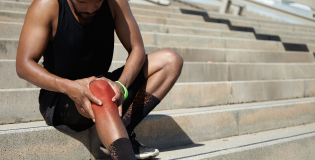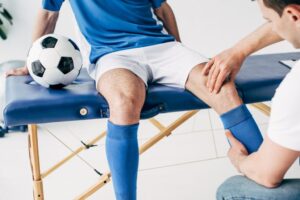Do you know that your body has over 900 ligaments with the majority of them lying in your arms and legs? It’s because ligaments are mostly present around the joints in the human body. Moreover, another interesting fact is that one of the most commonly injured ligaments is the ACL which is found in the knee. Now, the knee also has three other main ligaments which in total makes the number of ligaments equal to four.
Since the knee is one of the most important joints for mobility and even important for sports performance, you should know about these ligaments and injuries related to them. That’s why we have dedicated this blog to all four types of knee ligaments, their injuries, and their treatment and prevention.
Types of Knee ligament and knee ligament Injuries
There are four ligaments in the knee with their specific functions. All these ligaments can get injured but the chances of a ligament getting injured differ as per its location. Here are the four types of Ligaments in the knee and the details about their respective injury.
Anterior Cruciate Ligament (ACL) Injury
Let’s start with the ligament whose injury is very common, the ACL ligament. This ligament stabilizes the knee in case of sudden stoppage, change in direction, and landing after a jump. In these activities, the risk of knee sliding forward increases which is why the ACL is very crucial.
Now, when this Ligament gets a tear it’s called an ACL tear or injury. It can be of three grades depending on the severity of the tear. The cause of the ACL tear is the same movements against which it stabilizes the knee like sudden stoppage Change in Direction or incorrect Landing after a jump. The symptoms of an ACL tear are a popping sound at the time of infection, immediate pain, swelling, and difficulty in walking.
Posterior Cruciate Ligament (PCL) Ligament
PCL or posterior Cruciate Ligament is the ligament that has control over the backward movement of the shin, the lower leg. This ligament is present in the back of the knee which is why an injury to this ligament is rare. However, there are still chances of injuries if your knee gets hit from the front mostly During accidents.
The symptoms of this knee injury are similar to those of ACL except there’s no popping sound. Also, the pain in case of a PCL injury is induced in the back side of the knee and on the sides of the front.
Medial Collateral Ligament (MCL) Injury
Now what if you receive some forces from the outside? What happens to your knee in such cases? In such cases, the MCL is the ligament that plays an important role in stabilising the knee. It works against such forces and prevents the deformation of the knee structure. The location of this ligament is on the inner side of the knee.
The injury to this ligament can occur in sports like hockey, football, etc, where the risk of receiving outer forces is more than in any other game. In an MCL Injury, you may feel symptoms like tenderness along the inner knee, swelling, pain, and difficulty in even minor knee movement.
Lateral Cruciate Ligament (LCL) Injury
The last type of ligament in the list is ICL which you can find positioned sideways in the knee. It stabilizes the knee during the sideways movement like dodging. Just like PCL, an injury to this ligament is also uncommon. But If you receive an LCL Injury, you will feel instability in the outer knee along with pain and swelling. However, the swelling may not be so prominent and also occur after some time.
What are the Treatment Options for Knee Ligament Injuries?
So what if any of your ligament gets hurt? What are the treatment options? While there are many options for the treatment of ligament injury, let’s only talk about the non-surgical ones with a high rate of success.
The RICE Treatment
The first in the list of the RICE treatment which is a very effective method to get rid of swelling, and pain and catalyse natural recovery. So, how does it work?
The rice method stands for Rest, Ice, Compression and Elevation. These four techniques are performed one by one by a specialist. Firstly, the doctor will provide you with rest by putting the affected part in the most adequate position.
It helps to initially deal with the pain and stop internal bleeding. Now, to get rid of the pain almost completely, the doctor puts ice on the affected area. It numbs the knee and the pain gets lighter which is important for the next step.
The next step is compression which requires the area to be pressurised. It helps align the knee and makes the recovery faster. Lastly, the leg is put in an elevated position to further align it and stop the internal bleeding completely.
Physiotherapy
Physiotherapy is also a treatment for healing knee ligament tears. Guided exercises strengthen the muscles around the knee, restoring stability and flexibility. Gentle movements evolve into more challenging routines, gradually rebuilding your knee’s resilience.
With consistency and expert guidance, physiotherapy not only speeds up recovery but also helps prevent future injuries. It’s like retraining your knee to dance again, bringing you back to your favourite activities with confidence and strength.
Regenerative interventions
In cases where the tear or damage is significant with pain and swelling regenerative interventions using your own blood and bone marrow have been shown to give significant results with healing over time and they are minimally invasive.
How to Prevent Knee Ligament Injuries?
Let’s say you are not injured yet, but since you are in sports or do exercise daily, how can you prevent knee ligament injuries? So, here are some simple and effective strategies:
Strengthening Exercises
Focus on Stability: You must focus on making the muscles around your knees strong. As a result, it will make your joints more stable. For this, you can include exercises like leg presses and hamstring curls in your routine. These exercises will build your muscles and support your knee. In this way, your knees will become strong, and less likely to get injured.
Balance Workouts: To improve the stability of your knees, you can do balance exercises. For example, standing on one leg or using a balance board reduces the risk of injury.
Proper Technique in Sports
Correct Form: When playing any sport or doing physical activity you should focus on the right technique. Poor form can put extra stress on your knees. For example, you must bend your knees when landing from a jump. It will prevent ligament damage.
Role of Coaching: Coaches play an important role in teaching you proper technique when playing a sport. Besides, they also ensure the use of the right form which helps to protect your knees during physical activities.
Protective Gear
Knee Braces: Wearing protective gear adds extra support to your knees. Moreover, it also reduces the risk of injuries. Braces stabilise your knee and absorb some of the impacts during physical activities. Hence, they are useful during high-impact exercises or sports.
Wrapping Up
Knee ligament injuries may seem daunting, but understanding them is the first step toward effective prevention and treatment. By knowing the role of each ligament and how injuries can occur, you’re better equipped to protect your knees and maintain your mobility.
Whether through strengthening exercises, proper technique, or guided physiotherapy, you can keep your knees strong and resilient, ready to support you in all your activities. Remember, a little care today can prevent a lot of pain tomorrow.
Frequently Asked Questions
It can take 6-9 weeks to heal from a knee ligament injury. It depends on the type of injury, its intensity, and other factors like age, lifestyle, and existing health issues.
No, the knee ligament tear doesn’t heal on its own but, with regenerative intervention, it can be fixed without surgery if the ligament isn’t torn completely.
Pain, swelling, inflammation, and instability are some of the common symptoms of a torn ligament in your knee.
You may be able to walk after swelling and pain in your knee goes away in mild cases of knee ligament tear.
The best treatment depends on the grade of the ligament tear. For grades 3 and less, regenerative intervention works well. But for a completely torn ligament, a ligament reconstruction surgery is a must.






